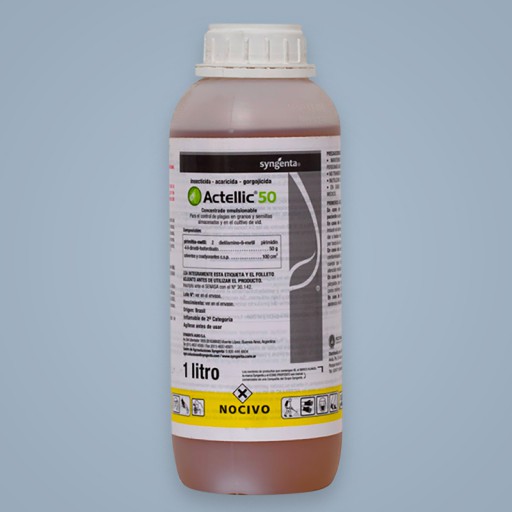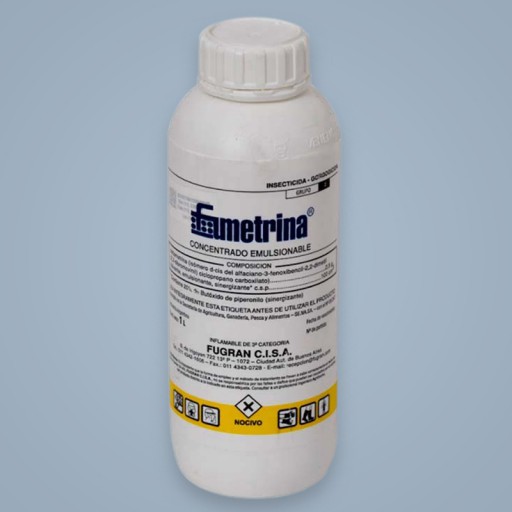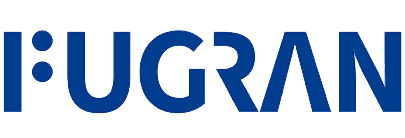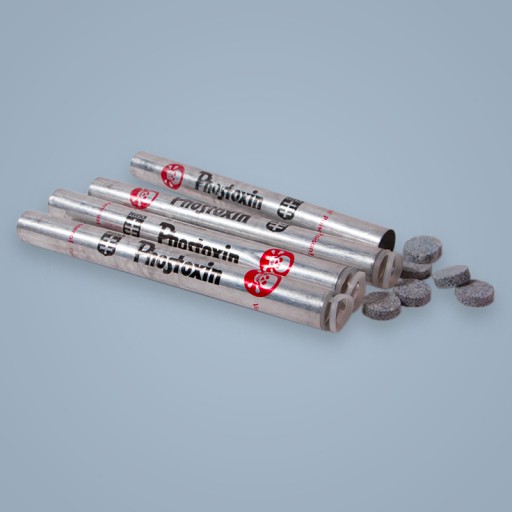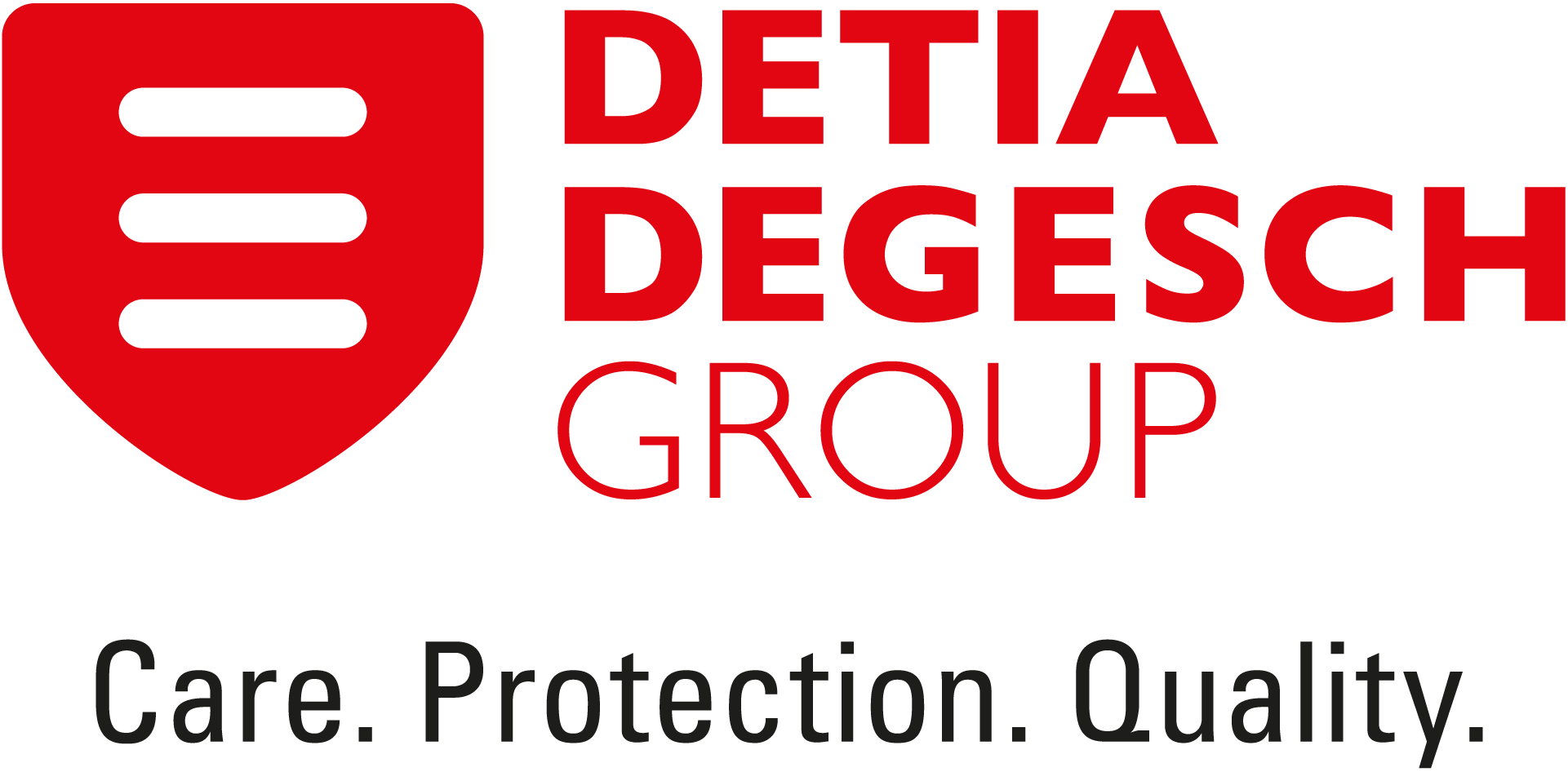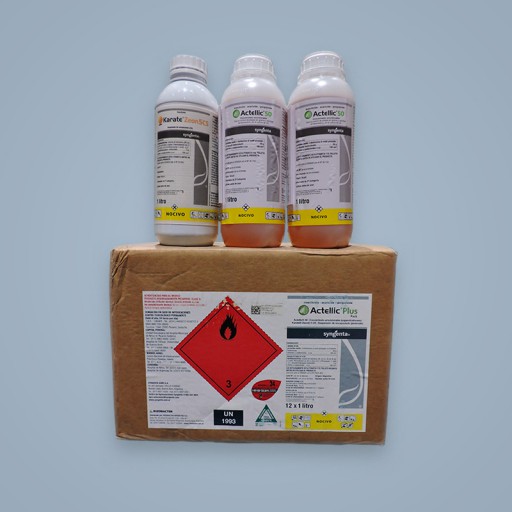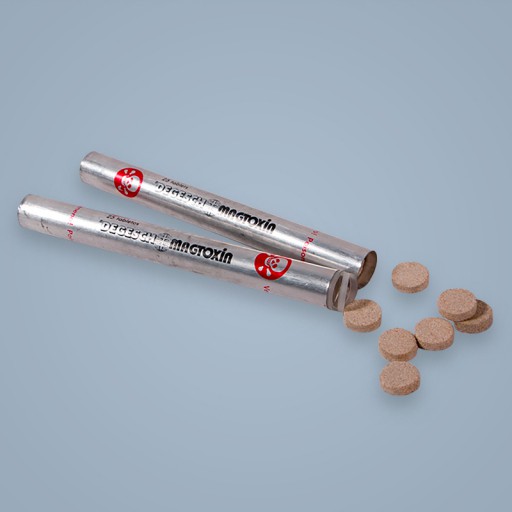
Magnesium phosphide
Due to its properties, magnesium phosphide (Mg3P2) based formulations release phosphine faster, even under suboptimal conditions.
Mg3P2 is produced by fusion of magnesium and yellow phosphorus. When in contact with the air and humidity it releases the efficient phosphine gas.


Formulation
Pellets contain magnesium phosphide (66%) as an active substance and 34% of inert components such as ammonium carbamate among others, used for phosphine controlled gasification.
A pellet weighs 0.6 g and it releases 0,2 g phosphine.
A pellet weighs 0.6 g and it releases 0,2 g phosphine.
Tablets contain magnesium phosphide (66%) as an active substance and 34% of inert components such as ammonium carbamate among others, used for phosphine controlled gasification.
A tablet weighs 3 g and it releases 1 g phosphine.
A tablet weighs 3 g and it releases 1 g phosphine.
The plates and strips are formulations containing magnesium phosphide active substance at 56% high purity and 44% inert ingredients.
Both products do not contain ammonium carbamate.
The components are embedded in a flexible plastic matrix lined with a special paper that is permeable to water vapor and phosphine (PH3). The material used guarantees safe and controlled gasification.
Both products do not contain ammonium carbamate.
The components are embedded in a flexible plastic matrix lined with a special paper that is permeable to water vapor and phosphine (PH3). The material used guarantees safe and controlled gasification.
Packaging
PH x 480 or MG 432. Aluminum bottles of different sizes with UN approval, flanged and hermetically sealed with plastic screw cap.
Contents:
100 g, 250/300 g, 900/1,000 net g
Contents:
100 g, 250/300 g, 900/1,000 net g
Plates and strips are individually packaged in gas-tight aluminum foils. The plates weigh 117 g and release 33 g phosphine. The strip is made up of 20 bonded plates of 117 g, weighing 2340 g each.
Application
Gasification of pellets and tablets begins some time after the fumigation product is in contact with the product moisture or the atmospheric humidity. In general, the gasification rate depends on the temperature and relative humidity of the air. Due to the small size of the pellets, their gasification occurs a little faster than when using tablets.
All development stages of pests in stored products can be controlled with phosphine. Phosphine effectively controls all four pest development stages, i.e. eggs, larvae, pupae and adults.
The highly efficient gas penetrates almost all packaging materials, as well as in well-packaged goods.
Magnesium phosphide releases phosphine faster than aluminum phosphide. The maximum concentration of phosphine is reached in about 24 to 36 hours after applying the pellets or tablets. Fumigants containing the aluminum phosphide active substance usually release approximately 72% in the same period of time (60% relative air humidity, 20°C).
Phosphine is corrosive against noble metals (copper, silver, gold) and their alloys. For this reason, it is mandatory to protect materials containing noble metals and electronic equipment with phosphine gas-tight tarpaulins or remove them from the fumigation area before applying the tablets.
Application area:
The use of pellets and tablets is not limited to a specific place provided that the area to be fumigated is well sealed and airtight. They are applied in silos, ships, warehouses, containers, etc. and they can be applied manually or with the Detia Degesch automatic dispenser on the goods to be treated. Pellets and tablets are excellent for fumigating bulk goods and silos and effectively eliminate insects on barley, corn, millet, oats, peanuts, rice, rye, sunflower seeds, wheat in silos, ships , horizontal silos and other feed.
All development stages of pests in stored products can be controlled with phosphine. Phosphine effectively controls all four pest development stages, i.e. eggs, larvae, pupae and adults.
The highly efficient gas penetrates almost all packaging materials, as well as in well-packaged goods.
Magnesium phosphide releases phosphine faster than aluminum phosphide. The maximum concentration of phosphine is reached in about 24 to 36 hours after applying the pellets or tablets. Fumigants containing the aluminum phosphide active substance usually release approximately 72% in the same period of time (60% relative air humidity, 20°C).
Phosphine is corrosive against noble metals (copper, silver, gold) and their alloys. For this reason, it is mandatory to protect materials containing noble metals and electronic equipment with phosphine gas-tight tarpaulins or remove them from the fumigation area before applying the tablets.
Application area:
The use of pellets and tablets is not limited to a specific place provided that the area to be fumigated is well sealed and airtight. They are applied in silos, ships, warehouses, containers, etc. and they can be applied manually or with the Detia Degesch automatic dispenser on the goods to be treated. Pellets and tablets are excellent for fumigating bulk goods and silos and effectively eliminate insects on barley, corn, millet, oats, peanuts, rice, rye, sunflower seeds, wheat in silos, ships , horizontal silos and other feed.
When the product is removed from the aluminum package, gasification begins after a short but sufficient delay time as they are in contact with the air relative humidity or moisture in the stored products. That is an important safety factor for the fumigator.
Phosphine effectively controls all four stages of pest development, i.e. eggs, larvae, pupae and adults.
Apart from its excellent insecticidal properties, phosphine quickly penetrates almost all packaging materials such as paper, wood or synthetic materials, as well as well-packaged goods such as tobacco in boxes or bales. Phosphine is corrosive against noble metals (copper, silver, gold) and their alloys. For this reason, it is mandatory to protect materials containing noble metals and electronic equipment with phosphine gas-tight tarpaulins or remove them from the fumigation area before applying Plates or Strips.
Application areas:
Plates and strips are especially suitable for fumigating tobacco because they do not contain ammonium carbamate. They are perfect for treating packed, bagged and processed goods such as cereals, rice, flour, coffee, tea, cocoa, cocoa beans, spices, herbs, dried fruits, animal feed, cotton, jute, chocolate, etc. The plates and strips can be successfully applied in all possible storage conditions, provided that the storehouses are well sealed. The plate is the ideal fumigant to apply in shipping containers.
Thanks to the special paper, none of the products contaminate fumigated products with magnesium phosphide residues.
Phosphine effectively controls all four stages of pest development, i.e. eggs, larvae, pupae and adults.
Apart from its excellent insecticidal properties, phosphine quickly penetrates almost all packaging materials such as paper, wood or synthetic materials, as well as well-packaged goods such as tobacco in boxes or bales. Phosphine is corrosive against noble metals (copper, silver, gold) and their alloys. For this reason, it is mandatory to protect materials containing noble metals and electronic equipment with phosphine gas-tight tarpaulins or remove them from the fumigation area before applying Plates or Strips.
Application areas:
Plates and strips are especially suitable for fumigating tobacco because they do not contain ammonium carbamate. They are perfect for treating packed, bagged and processed goods such as cereals, rice, flour, coffee, tea, cocoa, cocoa beans, spices, herbs, dried fruits, animal feed, cotton, jute, chocolate, etc. The plates and strips can be successfully applied in all possible storage conditions, provided that the storehouses are well sealed. The plate is the ideal fumigant to apply in shipping containers.
Thanks to the special paper, none of the products contaminate fumigated products with magnesium phosphide residues.
